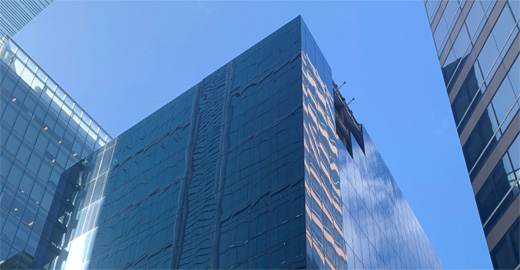This report aims to engage occupiers in their ESG journey, allow landlords to better align and develop stronger partnerships with their tenants, and guide occupiers to maximise their green potential through their real estate.
This report was originally published in https://apac.knightfrank.com/esgmattersapac
Download the Report Read MoreThe large-scale trends shaping the ESG investing world have become well recognized: climate change risk and the road to net zero, the growing existential threat of biodiversity loss, social inequalities, regulation and, lately, debate and controversy over greenwashing and what ESG should be.
Against a backdrop of a war in Europe, inflation, energy markets in turmoil, political uncertainty and an unending stream of climate-induced disasters, MSCI's ESG and Climate Trends to Watch for 2023 report takes a closer look at how some of the major developments may shape the investment environment and impact the challenges and opportunities for companies.
This report was originally published in https://www.msci.com/research-and-insights/2023-esg-climate-trends-to-watch
Download the Report Read MoreAt a time when many mature economies are reaching peak carbon, emissions in Asia Pacific remain on an upward trajectory as the region continues along a path of rapid urbanisation and economic growth.
Asia Pacific accounted for 53% of global carbon emissions in 2021, and has been responsible for more than 80% of global growth in carbon emissions over the past decade.
To improve transparency around the role that cites and the built environment play in carbon emission reduction, CBRE has developed the Asia Pacific Sustainable City Ranking, which measures current and future environmental resilience and its impact on commercial real estate across 28 cities in the region.
Cities are evaluated according to a range of environmental factors including greenhouse gas emission reduction, physical climate risk, water stress, air pollution, renewable energy use, green bond issuance, and green office building adoption.
This report was originally published in https://www.cbre.com/insights/reports/asia-pacific-sustainable-city-ranking-dec-2022
Download the Report Read More <
<
GDI Property Group (GDI), an Australian listed REIT headquartered in New South Wales, Australia, is currently constructing Perth’s first hybrid mass timber and steel frame office building. GDI will utilize a mix of cross laminated timber and steel to construct WS2, an 11 story, 9,500 square meter office building with the goal of creating a best-in-class, sustainably focused asset.
GDI underwent extensive research to understand both the environmental and economic impacts of developing what they’re calling Perth’s most environmentally friendly premium grade office building. Upon completion in late 2022, WS2 will boast a 5-star NABERS Energy Rating, a 5-star Greenstar Rating and will show a reduction of carbon by approximately 50% over the building’s lifespan vs. a similar al concrete/steel-based building and a reduction of 80% embodied carbon during the construction phase. This reduction will be captured through a combination of offsets, renewable energy systems within the building, and significantly lower embodied carbon during the construction phase. Ultimately, the goal is to achieve net zero operation, lowering scope one and two emissions, while achieving a better economic outcome as timber construction is “quicker and cheaper to build on a Total NLA Basis” according to the company in their 10 November presentation.
Read MoreClimate positive activities are aimed at not only achieving but surpassing net zero emission goals through eradicating additional carbon dioxide (CO2) and/or greenhouse gases (GHG) from the atmosphere. In short, it’s about saving more GHG emissions than your actions produce, in order to create an environmental benefit.
When developing a climate positive strategy, the first stage is to apply a carbon accounting framework. For instance, if a building product manufacturer wants to develop a climate neutral or positive product, they must determine the total carbon footprint of that product. The carbon footprint covers everything — from the energy needed to source the original material/s as well as to produce, supply, use and dispose of the product — to the emissions related to product original material/s sourcing as well as product production, usage and disposal.
Once the total carbon footprint is calculated, as well as what needs to be counteracted to become carbon neutral, then an additional measurement number, such as an extra 10% for example, can then be tagged on to estimate what is needed to go climate positive.
How enterprises actually achieve climate positivity can differ. Usually, however, they meet the requirements via a mixture of reducing carbon emissions, shifting to renewable energy, producing locally, investing into offsetting, and purchasing carbon credits.
Download the Report Read More